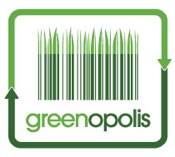Let’s Get Wild!
Waste Management has a goal to preserve 25,000 acres in the next 10 years!
Have you ever been to a wildlife habitat? I have, and I love them. It’s incredible to be surrounded by nature, with the opportunity to see hundreds of animals, insects or fish literally at your fingertips.
But here’s the issue: there’s not enough of them. (No, really, there isn’t.) And that’s a major problem.
Check it: “The amount of viable wildlife habitat has been declining at a fairly rapid pace over the years. Although scientists can point to a number of individual reasons for the decline, it is the cumulative impact of these environmental stresses that has exacerbated the problem. Among the most significant reasons for the decline in wildlife habitat is the effect of urbanization. As urban and suburban boundaries expand, and as available open space is consumed, there is an obvious decrease in the quantity and quality of habitat and its ability to perform the life sustaining functions...
“It is not only the development pressures that has had an impact, but also agricultural operations that reduce cover, the draining of wetlands for development or agriculture, and the construction of new infrastructure that has combined to reduce productive habitat lands…” (source)
Ouch. That’s not good. When our wildlife doesn’t have a place to reside, they are forced to find new locations —such as our backyards, cities, etc. And yes, those weird “and that coyote just wandered into our backyard during the picnic” stories are real—a prime example of habitat reduction.
But there is hope, and Waste Management (WM) is making it a point to be at the forefront of the wildlife habitat revolution. According to WM’s Wildlife Habitat Council, “Waste Management’s sustainability goal is to earn Wildlife Habitat Council certification at 100 sites and preserve 25,000 acres by 2020. The "Wildlife at Work" program preserves land as wildlife habitats by providing food, water, shelter, cover and space "suitable to animals" needs. "A site must be actively maintained and monitored for a year before it qualifies for certification.”
I’m not going to downplay it—I’m impressed, because that’s a whole lot of acreage. And WM is well on its way to making good on its promise. Case in point: GROWS, the first WM site to be certified. “Located in Falls Township, Pennsylvania, this landfill has been in operation since 1970. It is located near freshwater tidal wetlands of the Delaware River, an ecological treasure. This river is the primary source of drinking water for many surrounding communities, including the City of Philadelphia to the southwest. Several rare or endangered species call this area home, including the New Jersey chorus frog, southern leopard frog, red-bellied turtle, short nose sturgeon, and Atlantic sturgeon. These factors make meticulous environmental management crucial.”
Now, WM is clearly doing something on a grand scale, but you can do something too. How? By creating your own wildlife habitat in your own backyard. Want a good place to start? Check out this link.
by Gingerly Green of Two Girls Go Green
Greenopolis.com is dedicated to our users. We focus our attention on changing the world through recycling, waste-to-energy and conservation. We reward our users for their sustainable behaviors on our website, through our Greenopolis Tracking Stations and with curbside recycling programs.
GREENOP3397

